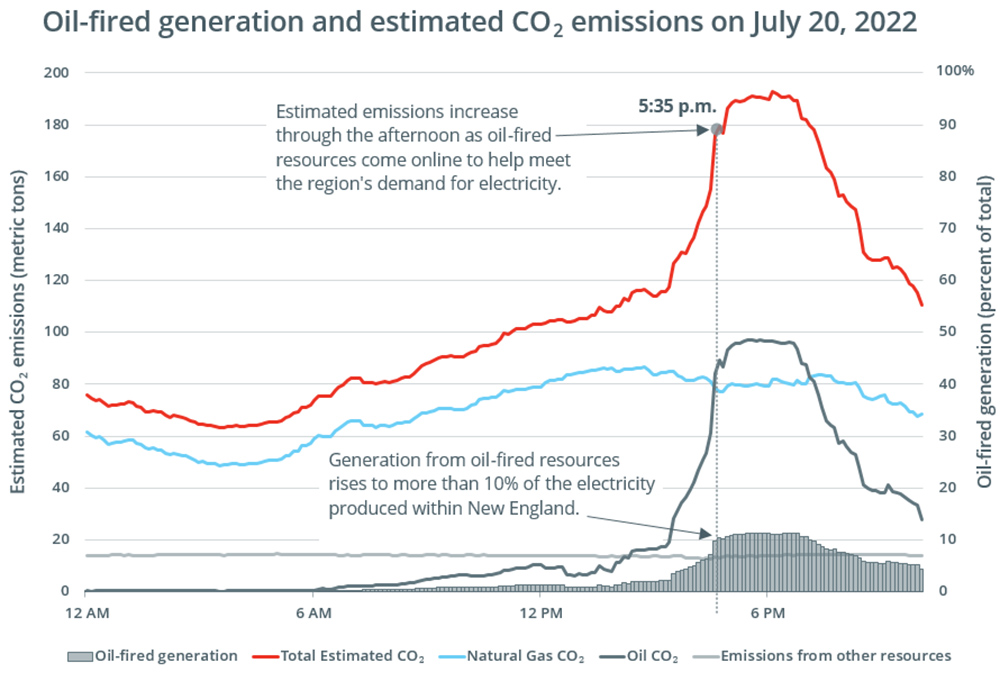A huge bump in emissions, fueled by generating facilities burning through 6 million gallons of oil, was the price that New England had to pay for making it through last month’s heat wave without any significant grid reliability problems.
New data released by ISO-NE on Wednesday gave the latest illustration of the uncomfortable tradeoffs that the region faces when the weather causes high demand for electricity.
The six straight days of above-average heat was the longest such stretch in New England over recent years. Those days were responsible for much of a spike in oil consumption by power generators, which ISO-NE noted took place July 12-25.
Generators used about 6 million gallons of oil, with oil-fired generation accounting for up to 11% of the electricity produced in New England during some hours of the hottest days in that stretch.
Firing up those oil plants brought with it a huge jump in emissions: During the week of the heat wave, New England power plants emitted 845,967 metric tons of CO2, roughly 50% more than the same period last year and 17% more than a record-setting heat wave in 2021.
 Generators burn more oil and, therefore, produce more emissions, when demand is high on New England’s grid. | ISO-NE
Generators burn more oil and, therefore, produce more emissions, when demand is high on New England’s grid. | ISO-NE
But the addition of oil generation did its job to steady the grid, and even with some unplanned outages, ISO-NE only had to issue an MLCC/2 alert, which lets resources know to hold off on testing or maintenance that might dent their availability.
“Our Operations staff managed the grid through teamwork, precise forecasting and rigorous planning, helping to ensure New Englanders had the electricity they rely on for their comfort, health and safety,” ISO-NE COO Vamsi Chadalavada said in a statement.
ISO-NE said that behind-the-meter solar production played a role in ramping down demand during the brightest daylight hours of the heat wave.
“On July 19, BTM PV generation reduced system demand by roughly 4,000 MW,” the grid operator said. “Without contributions from BTM PV, system demand would have approached levels forecast for weather much hotter and more humid than average.”
Where solar slowed down was where oil came in, during the late afternoon and evening hours.

